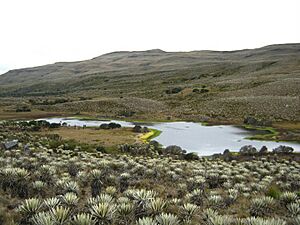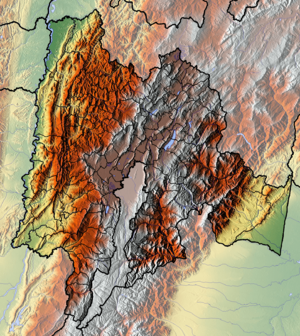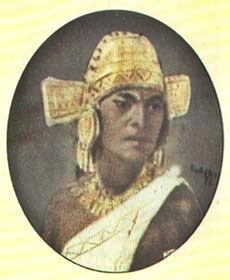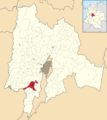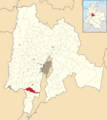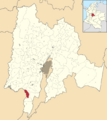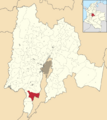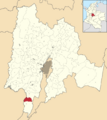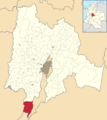Sutagao people facts for kids
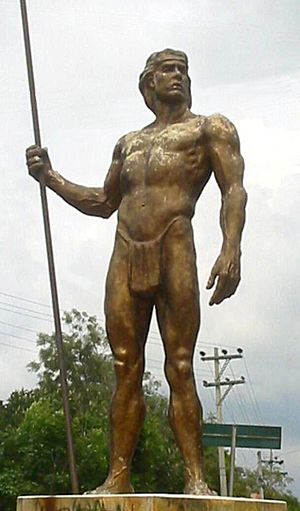
Sculpture of a Sutagao standing at the entrance of Fusagasugá
|
|
| Total population | |
|---|---|
| 85 (1760) | |
| Regions with significant populations | |
| Cundinamarca, |
|
| Languages | |
| Chibcha, Colombian Spanish | |
| Religion | |
| Traditional religion, Catholicism | |
| Related ethnic groups | |
| Muisca, Guayupe, Panche |
The Sutagao were an indigenous group from Colombia. They spoke a language called Chibcha. Their home was the region around Fusagasugá in the Cundinamarca area. Much of what we know about the Sutagao comes from a scholar named Lucas Fernández de Piedrahita.
Contents
What Does "Sutagao" Mean?
The name Sutagao comes from the Chibcha language. It combines two words: Su(t)á, meaning "Sun," and gao, meaning "son." So, the name Sutagao means "Sons of the Sun."
Where Did the Sutagao Live?
The Sutagao were a smaller group of people. They lived in a specific part of what is now Cundinamarca. Their territory was located between the Sumapaz Páramo and the Pasca River. A páramo is a special type of mountain ecosystem found in South America.
The main town in their area was Fusagasugá. Other nearby places where they lived included Arbeláez, Pandi, San Bernardo, Venecia, Cabrera, and Sumapaz.
A Look at Sutagao History
Before the Spanish arrived, the Sutagao had conflicts with their neighbors, the Muisca people. The Muisca were a larger and more powerful group.
Around the year 1470, the Muisca leader, known as the Zipa Saguamanchica, fought against the Sutagao. The Sutagao leader, called a cacique, lost this battle, known as the Battle of Pasca. This meant the Sutagao became part of the Muisca's territory.
Later, when the Spanish arrived, a conquistador named Hernán Pérez de Quesada took control of the Sutagao lands. This happened as part of the creation of the New Kingdom of Granada, which was a Spanish colony.
The Sutagao people continued to live in their region. In 1592, a new town was started by Bernardino Albornoz. Records show that in 1592, there were 759 indigenous people living in Fusagasugá. However, by 1760, their population had greatly decreased to only 85 people. At that time, many new settlers had moved into the area.
Images for kids


